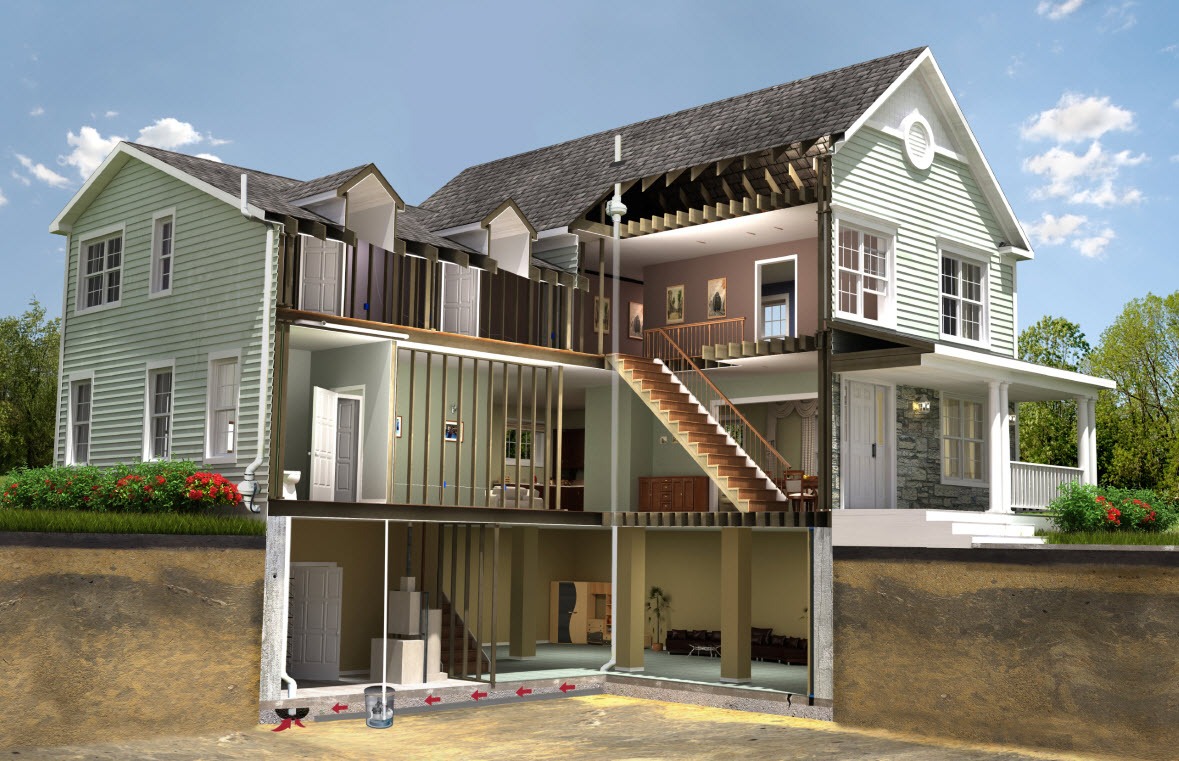
PVC or rain downspout material is ran from the radon fan to the exhaust point, up along the side of the house.
Exhaust fans and HVACExhaust fans and HVAC systems in homes can disrupt the natural flow of air in the home and potentially exacerbate existing radon problems.
Radon SystemsWith typical radon systems, an exterior rated inline radon fan is installed above grade preferably in an inconspicuous area whenever possible.
PVC PipingPVC piping is ran from the suction point in the floor to the radon fan in the shortest and most practical path and with the least amount of turns and bends
PVC Hole DetailsA 3 or 4 inch hole is made through the floor and a small pit is evacuated in the ground to create a radon collection point.
PVC SealingObvious openings in the floor need to be sealed to provide the most effective and efficient remediation plan. Sump pits are fitted with a lid if necessary, while also allowing easy access to the sump pump.
PVC Suction PointsSometimes multiple suction points are necessary to effectively depressurize an entire slab area.
Stone SlabStone aggregate under the slab is utilized to provide an effective way to collect the radon at a single point and discharge it outside and away from the home.
Radon TestRadon test are conducted in the lowest lived-in area of the home, most often a basement.
Radon ContactRadon can potentially enter through any area in contact with the soil through cracks, gaps, holes, concrete pores and other openings.
Radon Suction PipeAlthough uncommon, the radon suction pipe can be retrofitted entirely within the interior using closet space and other voids.
Window Radon TestExterior windows and doors should be closed prior to and during a short term radon test.
Insultation TechniquesModern homes are very efficient with newer insulation techniques. This can substantially lower the indoor air exchange rate, effectively trapping radon and other soil gases in the building.
Radon FanThe radon fan can be installed in an unfinished attic where practical, typically in newer homes built with existing passive radon systems.
Radon ExhaustThe radon exhaust point should be 10 feet above the ground, 10 feet away from any widows or openings to the building if not at least 2 feet above them, and also be above the eave of the roof.
Frequently Asked Questions / Common Concerns
Additional resources to learn more!
A Citizens Guide to Radon
EPA Health Risk
About Airotox Radon Remediation Services
We pride ourselves on providing our clients with high-quality and highly effective radon systems for homes and businesses in Southeastern Pennsylvania. We offer competitive rates coupled with experience and knowledge, backed by top-notch customer service. We have multiple technicians trained and certified in every facet of radon remediation who are passionate about providing our clients with the absolute best experience when it comes to radon remediation.
Let's Talk!
Airotox is here to solve any of your radon concerns in Southeastern Pennsylvania. Inquire about our services or just say hello!
